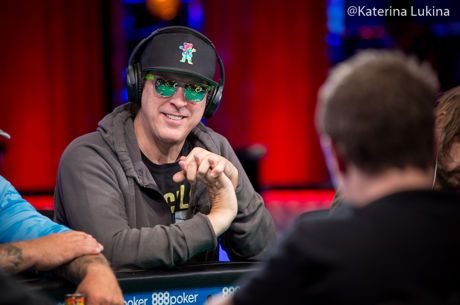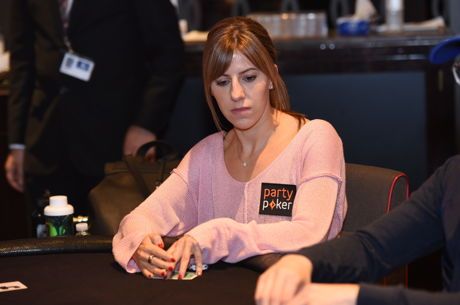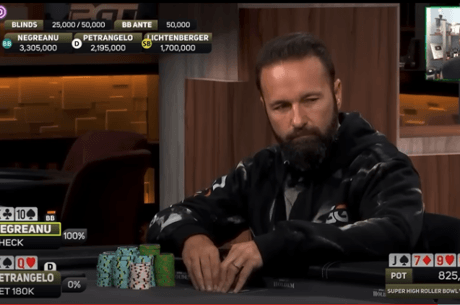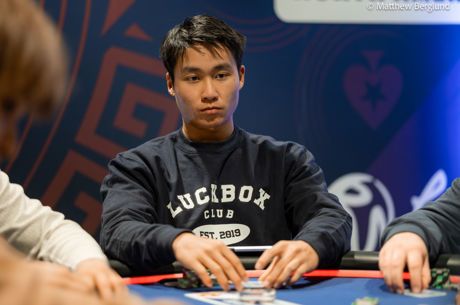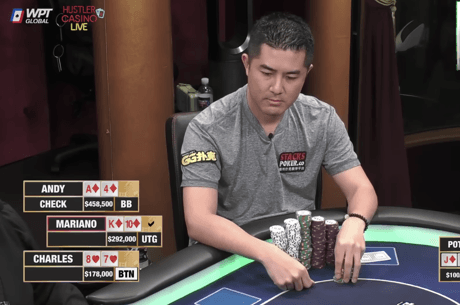Jonathan Little Breaks Down High Stakes Duel – Can Hellmuth Get Paid by Negreanu?
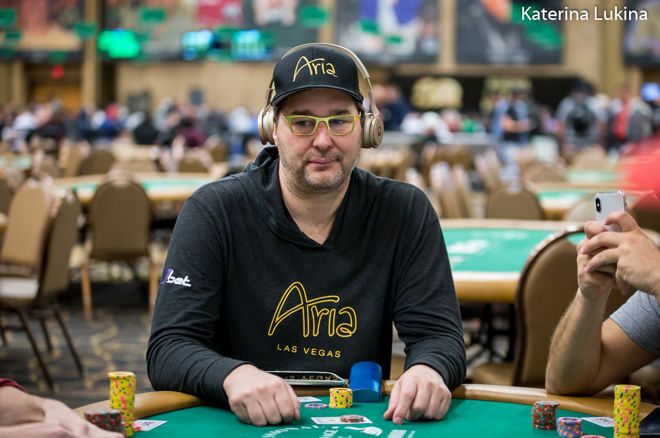
This hand between Daniel Negreanu and Phil Hellmuth in Round 1 of their High Stakes Duel II match was a great one to analyze due to the number of interesting decision points from both players.
I decided to get out the PIO solver for this one and use some node locking on Hellmuth’s strategy to see what differences that would make to how Negreanu should approach the hand. When Hellmuth’s hand turns into a very strong made hand by the river can he find a way to get paid? Let’s dive into it.
With the blinds at 500/1,000, Hellmuth (48,500) limped with the 9♥6♥. The solver limps 54 percent of the time with Hellmuth’s hand, and when you do, you should do it with the intention of calling a reasonable raise size. Indeed, Negreanu (51,500) raised to 3,000 with the K♦9♦ and Hellmuth called.
For the most part, Hellmuth played quite tight when he limped and was faced with aggression, which is something to keep in mind. When the flop came down K♥10♥Q♦, the board should favor Negreanu’s range due to his aggression preflop. However, Hellmuth’s actual preflop range will generally connect quite well with this flop too.
"When you are out of position and you don’t have much of a range or nut advantage you are going to want to check way more often."
As such, Negreanu should be incentivized to check at a high frequency due to the fact that Hellmuth has a strong range on the flop compared to a GTO range. When you are out of position and you don’t have much of a range or nut advantage you are going to want to check way more often. Even so, Negreanu went for a small bet of 1,500, which is fine according to the solver.
If you think your opponent is continuation-betting at a very high frequency then you should be inclined to raise a lot more, but in this particular situation, Hellmuth should call as he is getting great odds and is in position. If he raised and got reraised, he basically takes his excellent equity and throws it in the trash.
The solver only raises 11 percent of the time with Hellmuth’s flop range. It uses a lot of the hands that contain a jack as the bluffs due to those hands having a decent amount of equity as straight draws.
Hellmuth did call, the 6♠ appeared on the turn, and Negreanu bet 5,000. Now, when you bet infrequently on the flop with strong made hands and draws you are polarizing your range, which means that your equity is usually very good against your opponent. This also means that you usually want to continue betting on the turn with either a medium or a large bet size.
On the flip side, if you bet frequently on the flop then your range that gets to the turn will be much wider, but your opponent’s call on the flop discounts a lot of their possible junk hands. In other words, the call makes their range smaller and stronger.
Hellmuth has a clear marginal made hand with a lot of equity so he does not want to raise and get blown off his hand. He has a very clear call in my mind, and the solver agrees saying it would call 62 percent of the time.
The 3♥ river gave Hellmuth the flush and action was on Negreanu. What would you do in his shoes? Would you check? Bet small like 6,000? Bet medium say 12,000? Or Bet big like 19,000?

This is a pot where I think Negreanu should check. The 3♥ on the river was bad for Negreanu as Hellmuth would likely fold his marginal-made hands that contain a queen or a ten. If Negreanu were to bet, he should use a small size.
That’s just what he wound up doing by betting 6,000, admitting after the hand that he didn’t even realize the river was a third heart. The solver would check 80 percent of the time here, so Negreanu went against the grain.
Hellmuth had a very clear raise but needed to determine an optimal size that would get called by weaker hands. If you decide to raise and you believe your opponent has a marginal made hand then you should look to use a small raise size with your strong made hands.
As Negreanu bet all three streets his range should be polarized between strong made hands or complete air. In those instances, you should go for a big raise; in fact, the solver prefers going all in over a small size.
Hellmuth ended up raising to 17,500 and the solver folded 97 percent of the time with Negreanu’s hand. I would fold every time here against Hellmuth. During the match, Negreanu did a great job of not paying off against Hellmuth when he was faced with aggression on the turn and river, and he did the same here by releasing his hand.
For a more thorough solver breakdown of this hand, check out my thoughts in the following video:
Jonathan Little is a professional poker player and author with over $7,000,000 in live tournament earnings. He writes a weekly educational blog and hosts a podcast at JonathanLittlePoker.com. Sign up to learn poker from Jonathan for free at PokerCoaching.com. You can follow him on Twitter @JonathanLittle.


